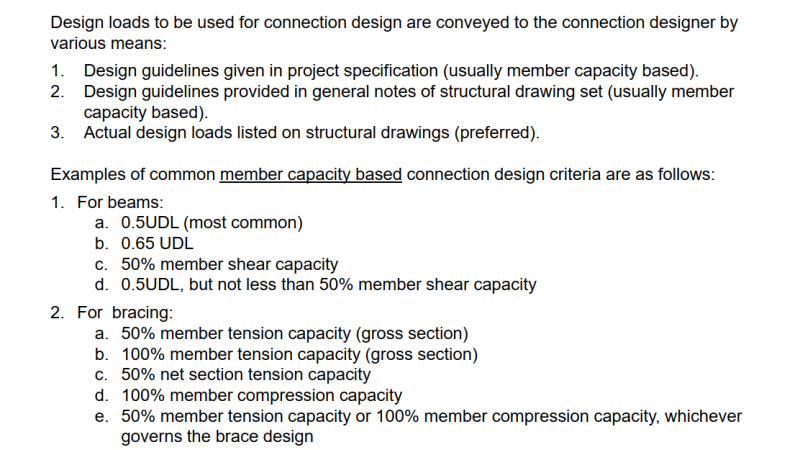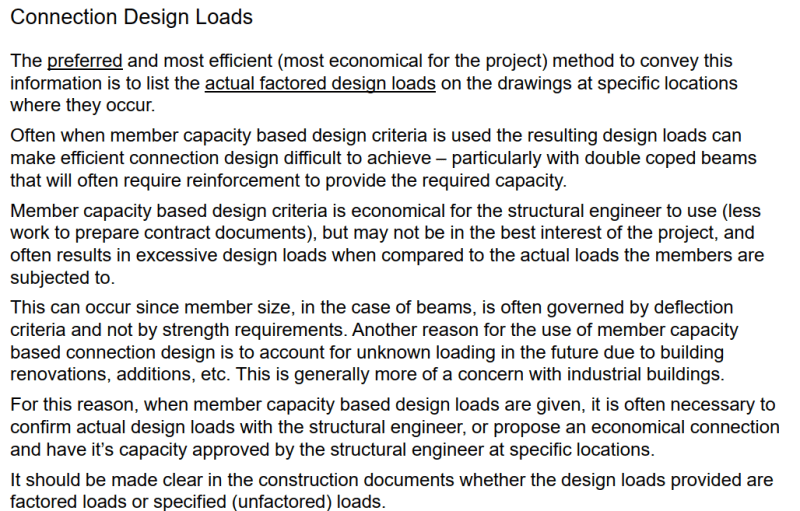Khashayar1
Structural
- Aug 1, 2023
- 3
Hi everyone,
Does anyone know how to obtain the connection design forces for steel beam to column connections (in Canada)? considering the subject connection is a moment connection. Does designing a moment connection for the full moment capacity of the beam, and 70% of its shear capacity make sense? Since beams are mostly governed by flexural failure before reaching their full shear capacity, I was wondering (as a consulting engineer), what are the best practices in providing the connection forces (moments, & shear) to the fabricator's engineer to design the connections with? your inputs are much appreciated.
Regards,
Does anyone know how to obtain the connection design forces for steel beam to column connections (in Canada)? considering the subject connection is a moment connection. Does designing a moment connection for the full moment capacity of the beam, and 70% of its shear capacity make sense? Since beams are mostly governed by flexural failure before reaching their full shear capacity, I was wondering (as a consulting engineer), what are the best practices in providing the connection forces (moments, & shear) to the fabricator's engineer to design the connections with? your inputs are much appreciated.
Regards,

![[bigglasses] [bigglasses] [bigglasses]](/data/assets/smilies/bigglasses.gif) I'm not a gangster, I expect the retribution on transgressors to be applied according to CODE.
I'm not a gangster, I expect the retribution on transgressors to be applied according to CODE.

![[afro2] [afro2] [afro2]](/data/assets/smilies/afro2.gif)
![[peace] [peace] [peace]](/data/assets/smilies/peace.gif)

